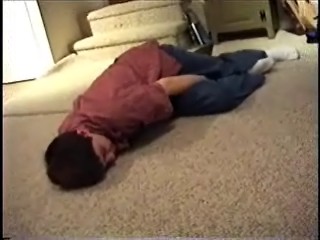Definition
Narcolepsy is a chronic sleep disorder characterized by uncontrollable sleep attacks during the day. Attacks can last from a few seconds to more than an hour and can significantly interfere with daily activities.
Description
People with narcolepsy often fall asleep suddenly, anywhere at any time, even in the middle of a conversation. They may sleep for just a few seconds or for up to a half hour, and then reawaken feeling alert until they fall asleep again. The condition affects one of every 2,000 Americans. Sleep apnea (difficulty in breathing while sleeping) is the leading cause of excessive daytime sleepiness. Narcolepsy is the second leading cause.
The attacks of sleepiness that are the hallmark of this condition may be mildly inconvenient or deeply disturbing. Some people continue to function during the sleep episodes, even talking and putting things away, but will reawaken with no memory of what they had been doing while briefly asleep.
Narcolepsy is related to the dreaming part of sleep known as REM (rapid eye movement) sleep. Normally, people fall asleep for about 90 minutes of non-REM sleep followed by REM sleep. However, people with narcolepsy enter REM sleep immediately; upon awakening, REM sleep recurs inappropriately throughout the day.
Causes & symptoms
Recent research suggests that the development of narcolepsy probably involves a combination of environmental factors and several genes, most likely those that have something to do with the immune system. The exact gene pattern has not been identified.
Twin studies suggest that narcolepsy is not exclusively a genetic disease, since only 25% of the time will both twins have the condition. The risk for a person whose immediate relative has narcolepsy is only about 1-2%.
Symptoms typically appear during adolescence, although the disease itself may not be diagnosed for many years afterward. The primary symptom is an overwhelming feeling of fatigue, together with sleep attacks that may occur with or without warning. About 75% of patients also experience cataplexy, a sudden loss of muscle tone lasting a few seconds to 30 minutes, but without loss of consciousness. Episodes of narcolepsy can be triggered by emotions such as laughter, fear, or anger. Other symptoms include sleep paralysis and hypnogogic (vivid) hallucinations as the person wakes up or falls asleep. Some patients may also have trouble staying asleep at night.
Diagnosis
If a person has both excessive daytime sleepiness and cataplexy, narcolepsy can be diagnosed by a patient history alone. Lab tests, however, can confirm a diagnosis. Tests at a sleep disorders clinic include an overnight polysomnogram (sleep is monitored with electrocardiography, video and respiratory parameters) followed by a Multiple Sleep Latency Test, which measures sleep onset and how quickly REM sleep occurs. In narcolepsy, sleep latency is usually less than 5 minutes. First REM period latency is also abnormally short.
If a diagnosis is in question, a genetic blood test can reveal certain antigens in people who have a tendency to develop narcolepsy. Positive blood test results suggest, but do not prove, the existence of narcolepsy.
Treatment
Patients can be treated with amphetamine-like stimulant drugs to control drowsiness and sleep attacks. The symptoms of abnormal REM sleep (cataplexy, sleep paralysis, and hypnagogic hallucinations) are treated with antidepressants.
Patients who don't like taking high doses of stimulants may choose to nap every couple of hours to relieve daytime sleepiness and take smaller doses of stimulants.
Prognosis
Narcolepsy can be a devastating disease that impairs a person's ability to work, play, and engage in meaningful activities. In severe cases, an inability to work and drive can interfere with daily life, leading to depression and a loss of independence. Drug treatments can ease symptoms but will not cure the disease. Narcolepsy is not a degenerative disease, and patients are not expected to develop new neurologic symptoms. Life span is normal if common sense is exercised regarding hazards, such as automobile accidents.
Key Terms
- Cataplexy
- A symptom of narcolepsy in which there is a sudden episode of muscle weakness triggered by emotions. The muscle weakness may cause the person's knees to buckle, or the head to drop. In severe cases, the patient may become paralyzed for a few seconds to minutes.
- Hypnagogic hallucinations
- Dream-like auditory or visual hallucinations that occur while falling asleep.
- Sleep paralysis
- An abnormal episode of sleep in which the patient cannot move for a few minutes, usually occurring on falling asleep or waking up. Sleep paralysis is often found in patients with narcolepsy.
Further Reading
For Your Information
Periodicals
- Mignot, E. "Genetics of Narcolepsy and Other Sleep Disorders." American Journal of Human Genetics, 60 (1997): 1289-1302.
Organizations
- American Sleep Disorders Association. 1610 14th St. NW, Ste. 300, Rochester, MN 55901. (507) 287-6006.
- Narcolepsy Network. PO Box 42460, Cincinnati, OH 45242. (973) 276- 0115.
- National Sleep Foundation. 1367 Connecticut Ave NW, Ste. 200, Washington, DC 20036. (202) 785-2300.
- Stanford Center for Narcolepsy. 1201 Welch Rd-Rm P-112, Stanford, CA 94305. (415)725-6517.
Gale Encyclopedia of Medicine. Gale Research, 1999.



